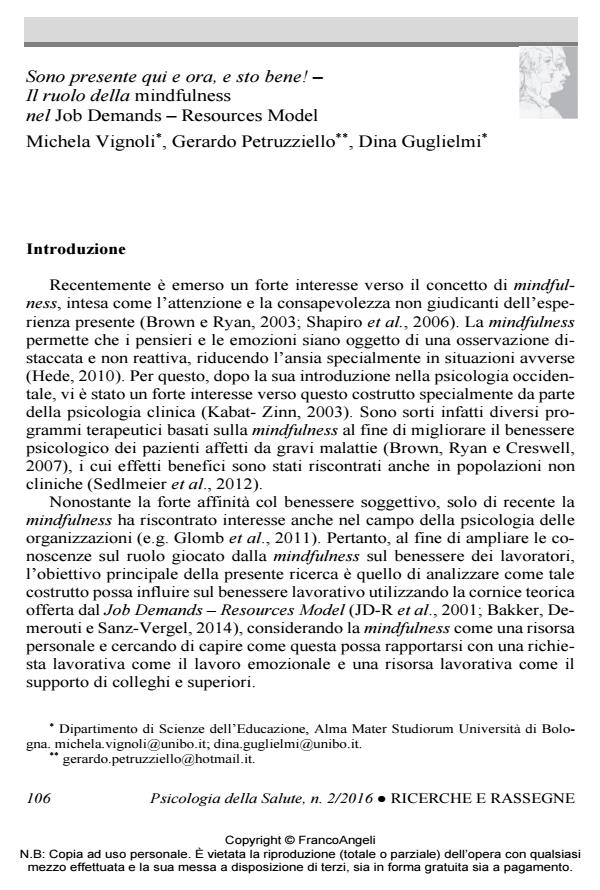Sono presente qui e ora, e sto bene! ? Il ruolo della mindfulness nel Job Demands - Resources Model�
Titolo Rivista PSICOLOGIA DELLA SALUTE
Autori/Curatori Michela Vignoli, Gerardo Petruzziello, Dina Guglielmi
Anno di pubblicazione 2016 Fascicolo 2016/2
Lingua Italiano Numero pagine 21 P. 106-126 Dimensione file 281 KB
DOI 10.3280/PDS2016-002006
Il DOI è il codice a barre della proprietà intellettuale: per saperne di più
clicca qui
Qui sotto puoi vedere in anteprima la prima pagina di questo articolo.
Se questo articolo ti interessa, lo puoi acquistare (e scaricare in formato pdf) seguendo le facili indicazioni per acquistare il download credit. Acquista Download Credits per scaricare questo Articolo in formato PDF

FrancoAngeli è membro della Publishers International Linking Association, Inc (PILA)associazione indipendente e non profit per facilitare (attraverso i servizi tecnologici implementati da CrossRef.org) l’accesso degli studiosi ai contenuti digitali nelle pubblicazioni professionali e scientifiche
L’obiettivo della presente ricerca è quello di investigare il ruolo della mindfulness ? «una consapevolezza che emerge facendo attenzione intenzionalmente, nel momento presente e in modo non giudicante allo schiudersi dell’esperienza momento per momento (Kabat-Zinn, 2003)» ? sul benessere lavorativo, considerandola come risorsa personale nel modello Job Demands - Resources. È stato ipotizzato che la mindfulness moderi l’effetto della richiesta lavorativa di surface acting sull’esaurimento emotivo. Inoltre è stato ipotizzato che la mindfulness possa esercitare un effetto negativo indiretto sull’esaurimento emotivo riducendo la percezione di richiesta di surface acting e un effetto positivo e indiretto sul work engagement, incrementando la percezione di supporto ricevuto da parte dei colleghi e dei superiori. I risultati dello studio, condotto su un campione di 316 persone impiegate in una catena di supermercati, hanno confermato le ipotesi. Sono discusse implicazioni per la ricerca futura. I risultati suggeriscono l’importanza di sviluppare la mindfulness nelle organizzazioni per promuovere il benessere delle persone al lavoro, perché permette loro di fare fronte alle richieste lavorative e di incrementare le risorse lavorative, che a loro volta possono migliorare la motivazione.�
Parole chiave:Mindfulness, risorse lavorative, surface acting, esaurimento emotivo, work engagement, job demands-resources model.
Michela Vignoli, Gerardo Petruzziello, Dina Guglielmi, Sono presente qui e ora, e sto bene! ? Il ruolo della mindfulness nel Job Demands - Resources Model� in "PSICOLOGIA DELLA SALUTE" 2/2016, pp 106-126, DOI: 10.3280/PDS2016-002006